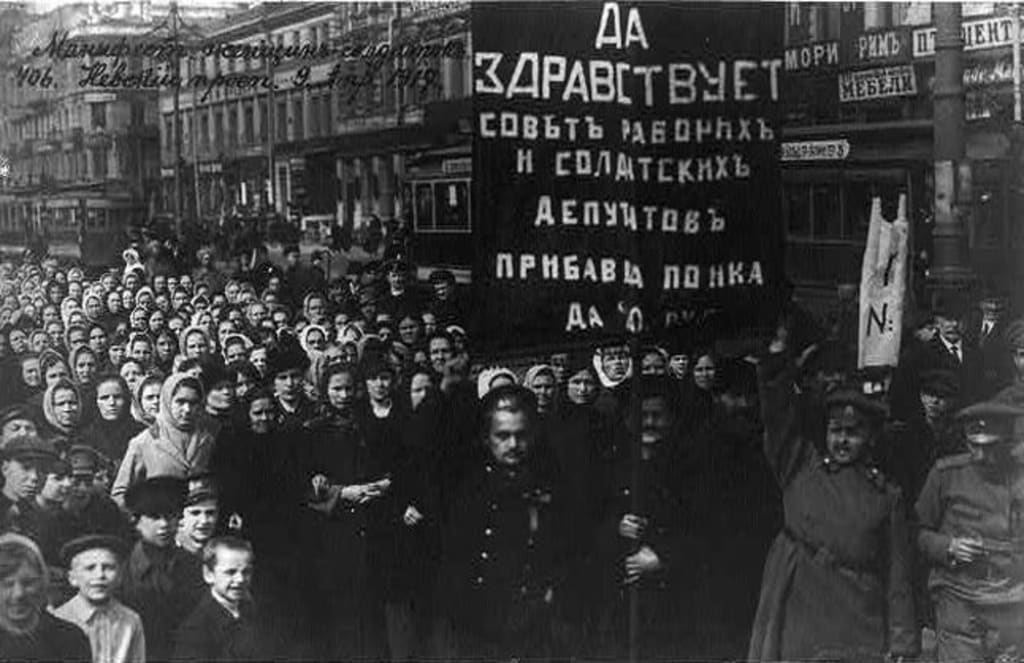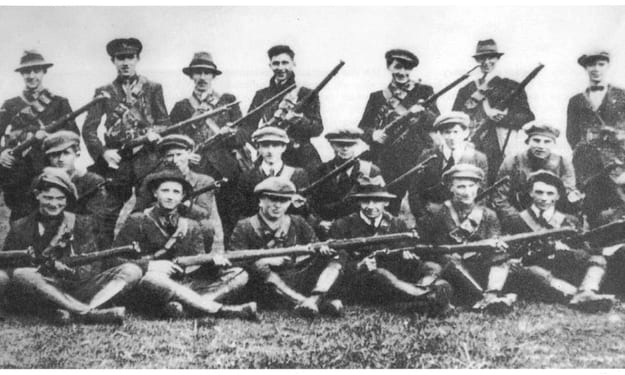
The Russian Revolution of 1917 was a series of political events in Russia that led to the overthrow of the autonomous government by the overthrow of the independent Duma Freedom Party, which led to the establishment of Soviet power under the control of the Bolshevik Party. In this chapter of the Russian Revolution, the temporary interim government is removed and replaced by the Soviet Socialist Republic under Lenin's leadership. The October Revolution [a] (also known as the Great Socialist October Revolution [b]) in the Soviet Union, also known as the Bolshevik Coup, Bolshevik Revolution, [2] October Uprising, October Coup or Red October Revolution in Russia by Vladimir Lenin's Bolshevik Party and holding a major role in the Great Russian Revolution (1917-1923), was the second revolution in the Russian government in 1917. It happened as an armed protest in Petrograd and Saint Petersburg on November 7, 1917 (Os.
On October 7 (25, 1917, according to the Julian calendar in Russia) Bolshevik members and supporters of the powerful Russian Social Democratic Workers Party seized Petrograd and overthrew the then-ruling Russian Government since the abduction of Tsar Nicholas II and proved to be ineffective. A key point in the successful coup d'état was the October Revolution in which the Bolsheviks, led by Bolshevik leader Vladimir Lenin, and Soviet workers overthrew the Interim Government in Petrograd. The October Revolution ended the transition phase that began in February and replaced Russia's interim parliamentary government with the government of Soviet local councils and elected committees of workers and farmers.
Following the success of the February Revolution, which transformed Russia into a Soviet republic, a coalition of Bolshevik militias attempted to overthrow the new government during the Russian Civil War (1918-1922). The first part of the Russian revolution included bringing in a long-running government of democracy and socialism under the leadership of Alexander Kerensky, a member of the Social Revolutionary Party. The first revolution overthrew the tsarist government and installed the Provisional Duma Government, whose members were members of the Kadet Party and were allowed to contact the Petrograd Soviet Commission to advise the government.
The Soviet system that emerged from the October Revolution was socialist in every way, marked by violent government institutions. Soviet historians have described the transformation as a product of the class struggle and as the highest event in the history of the world governed by historical law to achieve the accuracy of Marxist ideologies. After the revolution, Communist leaders used civil war tactics to gain the power of the most scattered Russian empire.
The overthrow of the Russian government of Nicholas II and the replacement of the Bolshevik regime under Lenin ended two phases: the Liberal Menshevik Revolution in March-February (old style) and the overthrow of Czar Nicholas II (socialist) and the Bolshevik Revolution in November-old (old style). Following the February Revolution of 1917, which overthrew the tsarist democracy led to an interim government that handed over power to the recently announced Grand Duke Michael, the brother of Tsar Nicholas II. He refused to take power when his brother resigned. The Bolshevik government was put in the middle of the revolution and exposed the shortcomings of the balanced Interim Government and the false socialist politicians-Menshevik Petrograd.
The October revolution brought the new state to power, ruling in the name of the working class and establishing a non-capitalist state economy. The Russian revolution set the stage for the rise of the Soviet Union as a world power that was directly involved in the Cold War with the United States. On November 6 and 7, 1917 (October 24 and 25 on the Julius calendar, sometimes called the October Revolution) left-wing extremists led by Bolshevik leader Vladimir Lenin began a bloodless rebellion against the interim Duma government.
On October 24, 1917, the Bolshevik Red Guards held important railway stations, telephone offices, and government buildings in the Russian capital on the night of September 24, 1917. October 11 Soviet Congress in the northern region October 13, October 20 First -October 25 Revolution, initiated by the MRC, ordered armed personnel and soldiers to take over important buildings in Petrograd.
Key elements of Vladimir Lenin's proclamation to the country - a law passed on October 26, 1917, in the Second Soviet Congress (workers, soldiers, farmers, and deputies) after the success of the October Revolution -.
Faced with the senseless killing of millions of soldiers in World War I, the October Revolution seemed to offer a different kind of government that would govern the interests of the common people and establish a communist state. Years of hard work by young anti-sectarian activists paved the way for change, but unfavorable economic conditions and declining self-confidence in the ruling elite forced older generations to overcome their fears and leave their comforts to pursue a political career that did not try to dream the next.
Motivated by the government's decision to impose new taxes, including one on WhatsApp, the so-called October campaign would not be reduced to simple anti-bullying protests, but to a real call for a revolution to overthrow the established political regime. Kornilov's case was short-lived, as it reaffirmed the Bolsheviks' power over the working class and the working class in Petrograd and undermined the loyalty of a government of politicians who supported unity and freedom (due to Cadet's involvement with the democratic constitution in the matter).





Comments
There are no comments for this story
Be the first to respond and start the conversation.